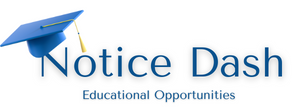Google’s Generative AI Course will be a perfect beginner course for the topic. It also covers Google Tools to help you develop your own Gen AI apps.
Introduction to Generative AI
Generative AI generates new content, such as text, images, music, or code, by learning patterns and structures from existing data. Unlike traditional AI, which typically performs tasks like classification, prediction, or optimization, Generative AI focuses on creating original and creative outputs.
Skills Generated by A.I.
This course teaches essential skills in Generative AI and Machine Learning. Do you agree this course imparts these skills?
Course Details
- Duration: 45 minutes
- Level: Introductory
- Cost: No cost
This introductory-level microlearning course explains what Generative AI is, how it is used, and how it differs from traditional machine learning methods. It also covers Google Tools to help you develop your own Generative AI apps.
Upon completing this course, earn the badge displayed here! View all your earned badges by visiting your profile page. Boost your cloud career by showcasing the skills you have developed!
To learn more, visit: https://www.cloudskillsboost.google/course_templates/536
Key Components
- Models and Algorithms:
- Generative Adversarial Networks (GANs): Consist of two neural networks, a generator and a discriminator, that work together to create realistic data. The generator creates data samples, and the discriminator evaluates them, improving the generator’s output over time.
- Variational Autoencoders (VAEs): Encode input data into a latent space and then decode it to generate new data samples that are similar to the original input.
- Transformer Models: Such as GPT (Generative Pre-trained Transformer) series by OpenAI, which are particularly powerful in generating human-like text based on patterns learned from large datasets.
- Training Data:
- Generative AI models are trained on large and diverse datasets, which can include text corpora, image databases, audio recordings, and other forms of structured and unstructured data.
Applications
- Text Generation:
- Chatbots and Conversational Agents: Creating human-like responses in customer service or virtual assistant applications.
- Content Creation: Writing articles, stories, or other written content automatically.
- Image and Video Generation:
- Art and Design: Creating original artworks, designing logos, or generating visuals for media.
- Deepfakes: Creating realistic images or videos that replace one person’s likeness with another’s, often used for entertainment or educational purposes.
- Music and Audio Generation:
- Composing Music: Generating new musical compositions in various styles and genres.
- Voice Synthesis: Creating realistic voice recordings for applications such as audiobooks or voice assistants.
- Code Generation:
- Software Development: Assisting developers by generating code snippets, automating repetitive coding tasks, or even developing entire software applications.
Advantages and Challenges
Advantages:
- Creativity: Enhances creativity by providing new and innovative ideas or designs.
- Efficiency: Automates time-consuming tasks, increasing productivity.
- Personalization: Creates customized content tailored to individual preferences and needs.
Challenges:
- Ethical Concerns: Issues related to copyright, deepfakes, and the potential misuse of generated content.
- Quality Control: Ensuring the generated content is accurate, relevant, and of high quality.
- Bias: Addressing biases in the training data that can lead to biased outputs.



